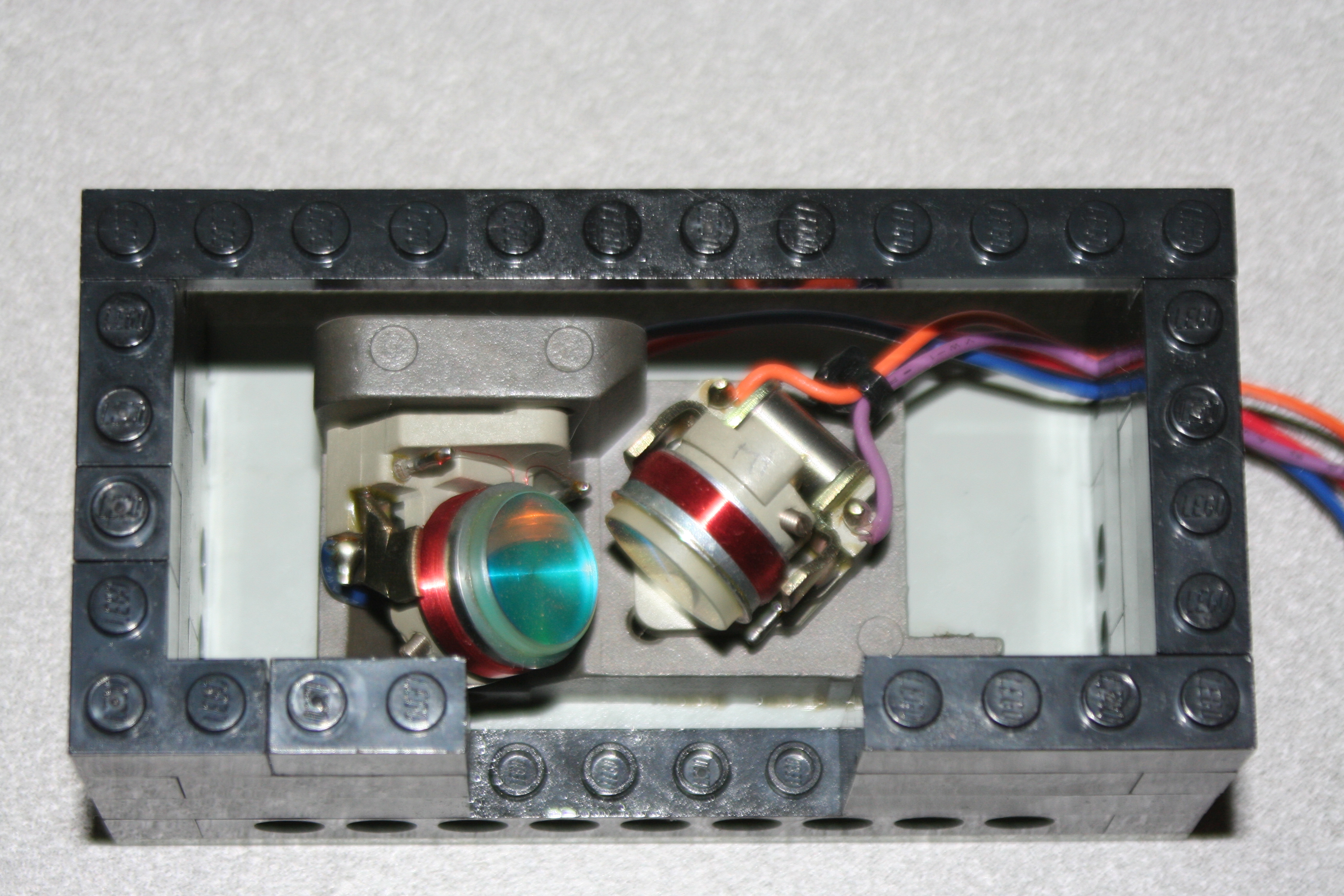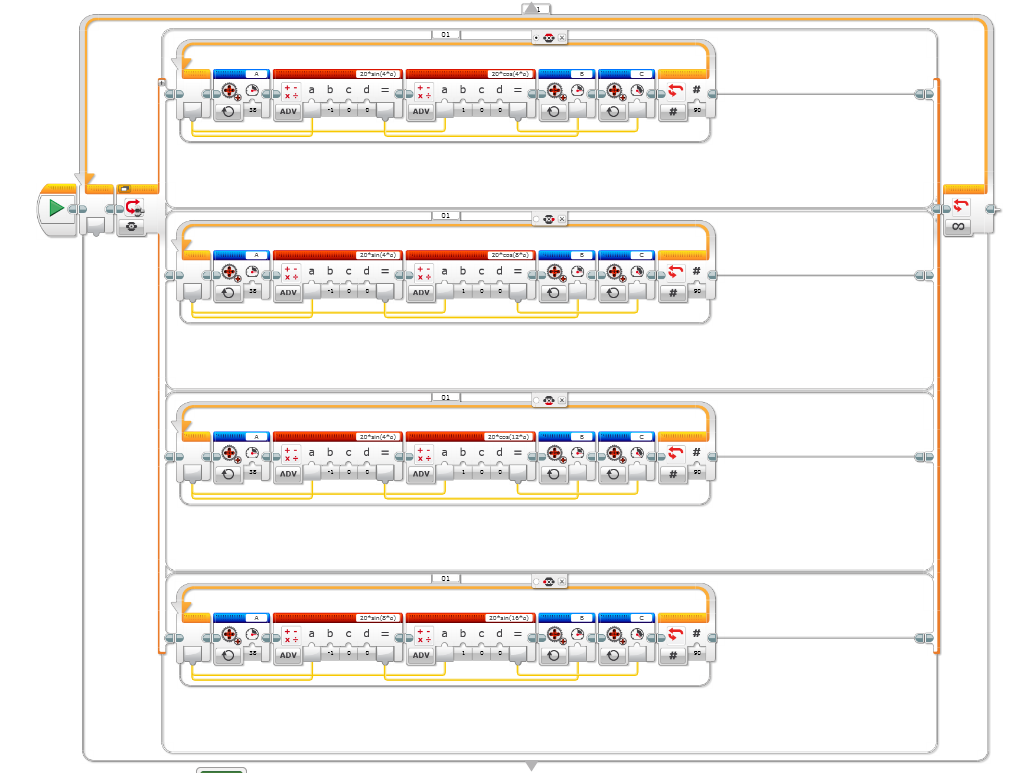Lissajous Laser Show

I first saw a laser light show at a Rush concert in 1984--I was mesmerized.
Since then I’ve built several of my own laser show machines. LEGO Optics has a chapter on
a mechanical design for a laser show, using motors to pivot mirrors. The mechanical solution
has an appealing gear-and-pivot aspect that’s fun to watch. But a computer based design can
also do interesting things. So I built a laser show from EV3. This project links several
other posts on my blog including: EV3 Laser, EV3 Voltage Source, and Breakout Board. I used
two outputs from the EV3 Intelligent Brick to program analog signals that drive a pair of
mirror galvonometers, shown in the photo above. A galvonometer works by a magnet being
tilted when current is applied to a wire coil around the magnet. A mirror is attached to
the magnet, so the mirror pivots. Bouncing a laser beam off the pivoting mirror will steer
the laser beam reflection. Mirror galvos are usually expensive. The set I used, in the
photo above, was scavenged from an old Laserdisc player of 1980s vintage. I epoxied the
galvo set onto a LEGO baseplate. The Laserdisc player also had a HeNe laser tube in it
that I got working, but this is a story for another day.
There are four wires connected to the galvo set, a pair of which go to each of the galvos in the
set. I connected each pair to a channel from the EV3 Intelligent Brick via a breadboard. Also,
a diode laser module is powered from an output of the EV3 Intelligent Brick. I programmed the
galvo with sine and cosine voltages, as shown in the screen shot below of the EV3 program.
The laser is on output A and the galvos are on channels B and C. This program demonstrates
that the EV3 output, as described in my post called EV3 Voltage Source, can be programmed
as a function generator, not just a DC power source. In this laser show, sine and cosine
waves of different frequencies are driving the galvo mirrors. The buttons on the EV3
Intelligent Brick front panel can be pressed to change the frequency applied to one or
the other galvo. The resulting laser show is shown in the video below, with the laser
beam projected against the side of my house. In the video, I’m toggling between two of
the frequency patterns by pushing buttons on the EV3 Intelligent Brick. The plotting of
two sine/cosine waves against each other creates a mathematical relation called a Lissajous
curve. Lissajous curves are often the subject in electrical engineering lab classes in
learning to use an oscilloscope. The laser show here creates and optical version of a
Lissajous curve.

